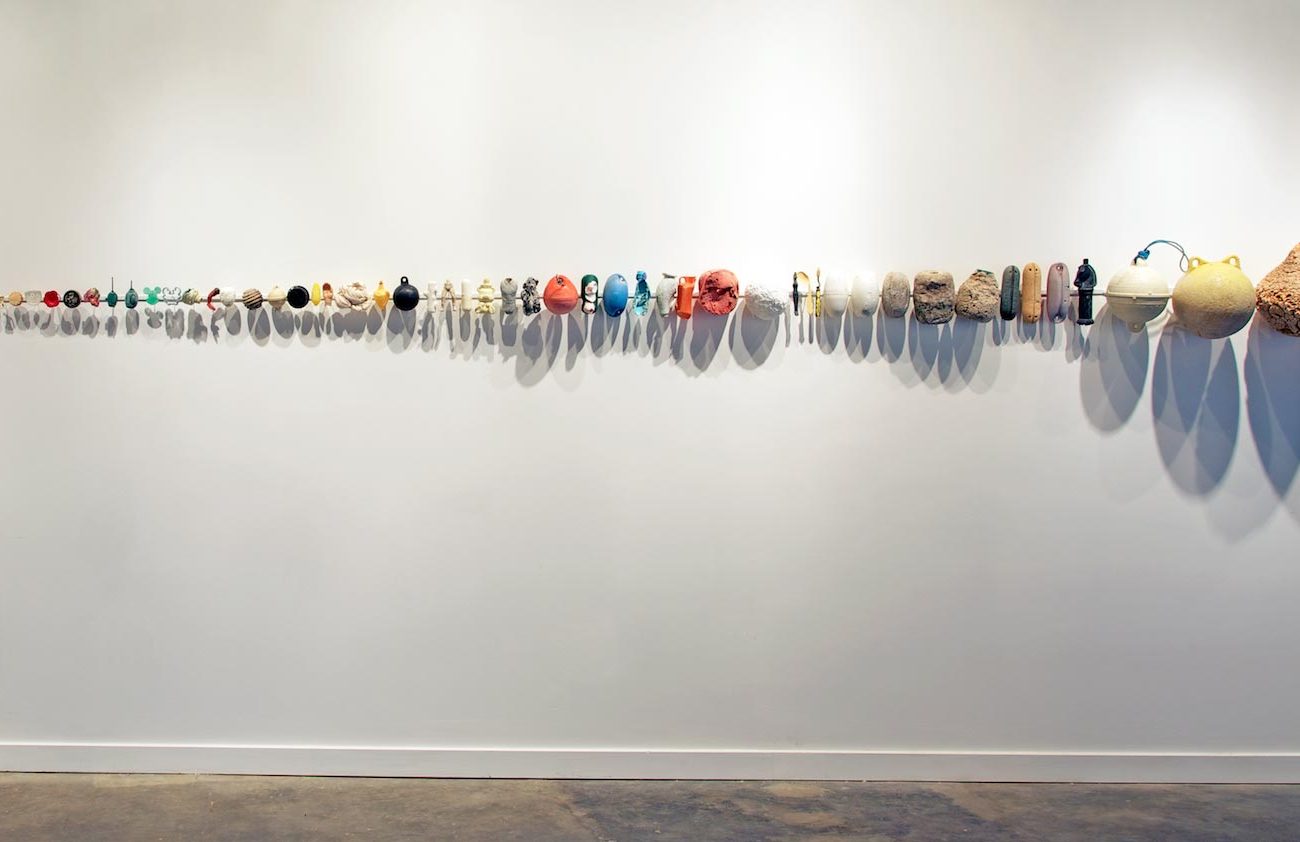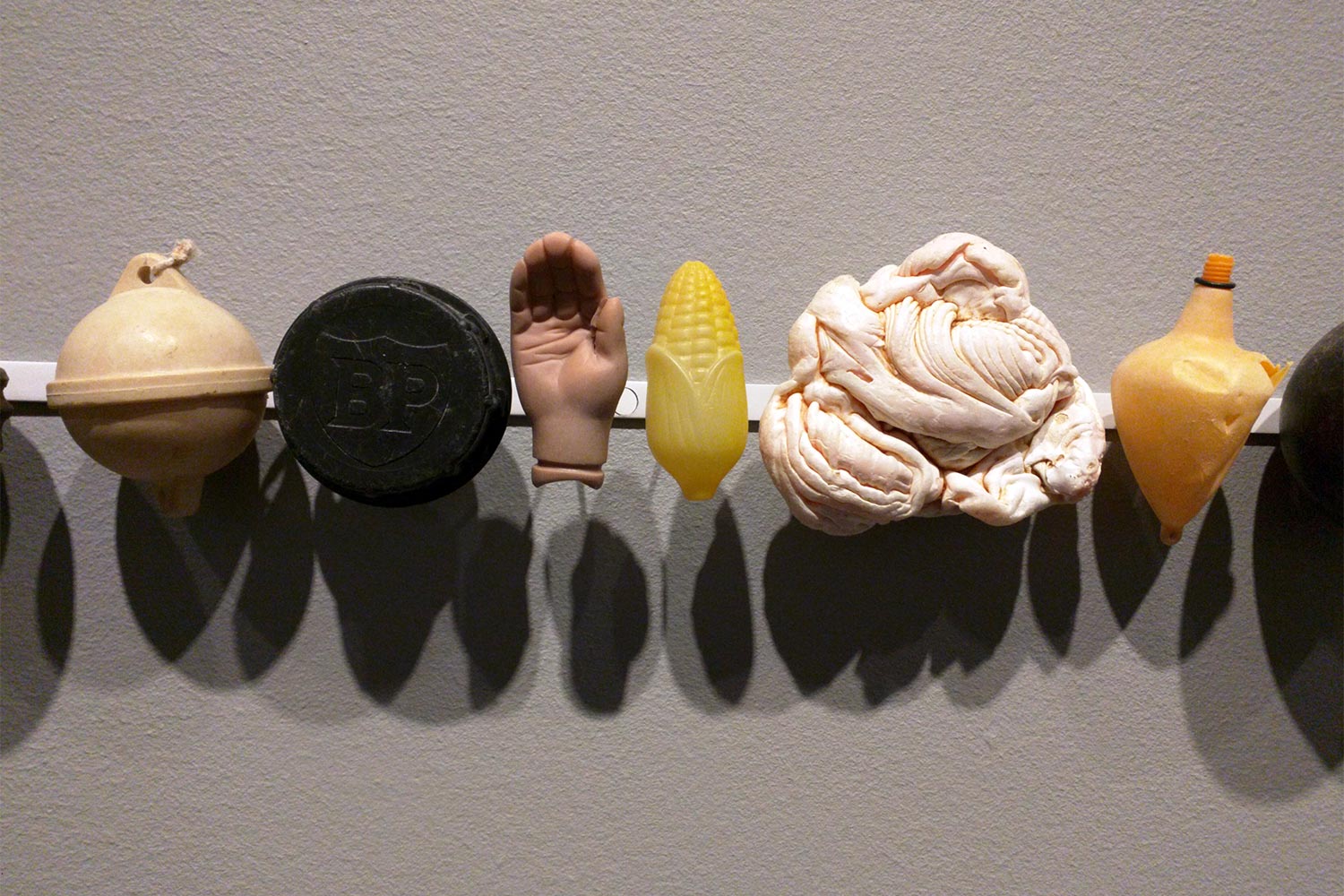Plastic Entanglements: Ecology, Aesthetics, Materials is an often beautiful, sometimes gross but altogether engaging new exhibit at the Jordan Schnitzer Museum of Art.
The line from the movie The Graduate comes to mind: “One word … plastics.” More than 50 years after a family friend offered that succinct career advice to the new graduate played by Dustin Hoffman, we are all faced with the problem of what to do about plastics.
Plastic, we read in the introductory statement to the exhibit, is “one of the most successful human inventions in the history of material sciences.”
Plastic also brings with it an environmental threat. The exhibit, which originated last spring at the Palmer Museum of Art at Pennsylvania State University, is organized in three sections — Archive, Entangled Present, and Speculative Futures. They showcase art that reflects plastic as both a beautiful medium and a frightening prospect.
The show presents 58 works, all either made of plastic or featuring it as a subject, by 30 artists whose videos, installations, sculptures and drawings fill the large Barker Gallery.
The very first piece you see in the show, entering the Archive space, is Economies of Scale (2013) by Pamela Longobardi, a row of objects arranged by size, progressing from minuscule to larger; a calligraphic line of plastic items, thin to thick, retrieved from oceans around the world.
The work looks like art but also functions as an archeology project. The QR code provided by the artist leads to a website that traces where each piece came from. Legs from a doll, a plastic corn on the cob, a fishing buoy (identified as “Japanese tsunami drift” in the catalog) — these are some of the plastic junk retrieved from oceans around the world.
Longobardi’s single line looks spare compared to works like Willie Cole’s Chandelier (2015), a massive sculpture hanging from the ceiling in the Entangled Present. It’s composed entirely of plastic water bottles and is as messy and complicated by consumerism and ecology as any other work in the show.
While taking notes for this review I became aware that the shell of the pen I was using could easily be one of the objects I was writing about. Then, in Speculative Futures, my pen ran out of ink; I realized I would soon be throwing it away, perhaps to wind up in a pile of trash such as that shown in the video Landfill Dance (2012) by artist Tejal Shah, which portrays a strange futuristic group of dancers moving in a world of debris and decay.
Perhaps the plastic parts of the pen might be washed up in a body of water or, worse, in an actual body, as did the plastics pictured in Chris Jordan’s video, Camel Gastrolith. This gastrolith, which came from a camel’s stomach in the Arabian Desert, is a compacted, tangled sculpture in which more than 500 plastic bags and other human-made materials are presented as a product or artifact of our times.
Back in my kitchen at home, I was reminded of the recent change in Eugene’s recycling program. Since last spring, local recyclers have no longer accepted plastic tubs or colored plastic bottles for recycling because facilities in China are no longer willing to process them.
While the nearly 60 works at the Schnitzer relate more or less to the theme of entanglement, the act of selecting plastic as a medium, or focusing on it as subject matter, can itself be considered political — particularly in an era when science about pollution is dismissed by those in high places.
President Donald Trump said recently he was the president of the country, not the “president of the globe.” This exhibit says no country can exist as an island. We are interconnected — entangled — by our material culture and by the one Earth we share.
Plastic Entanglements: Ecology, Aesthetics, Materials runs through Dec. 30 at the Jordan Schnitzer Museum of Art. Lectures and events begin 7:30 pm Wednesday, Oct. 17, in Straub Hall room 156 with artist and activist Dianna Cohen’s presentation “Plastic Pollution: Art to Action.”

